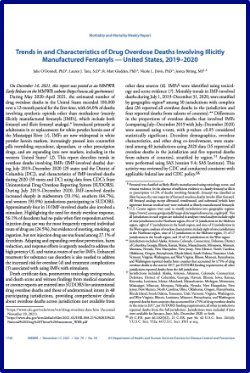By Bryce Pardo, Lois M. Davis, Melinda Moore
The opioid overdose crisis has continued to accelerate in recent years because of the arrival of potent synthetic opioids, such as fentanyl and related substances. Although several synthetic opioids have legitimate medical applications, the majority of overdoses are due to illicitly manufactured imports. Researchers from the Homeland Security Operational Analysis Center evaluated publicly available data to better understand the dimensions of the consumption and supply of these substances. They performed four tasks designed to gain insight into this new and quickly evolving phenomenon: (1) They evaluated trends in overdoses across regions and over time. Understanding where overdoses due to synthetic opioids occur provides a rough proxy for where law enforcement should prioritize screening efforts for packages that enter the country destined for such markets. (2) They evaluated the supply of fentanyl and related substances using public data from state and local forensic laboratories that report to national systems. The authors note a relationship between lab exhibits and fatal overdoses across regions and over time. (3) They examined the online markets for synthetic opioids. The team collected quantitative and qualitative data from online marketplaces and vendors to better understand what supply and concealment mechanisms vendors use when shipping product to the United States. (4) They evaluated the adulterants and other bulking agents used in retail distribution. There are limitations to each of these approaches, and the authors provide caveats to interpreting their findings.
Santa Monica, CA: Rand, 2019. 91p.





















